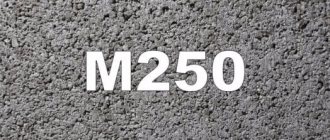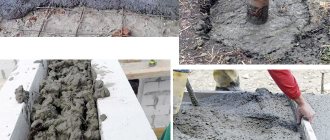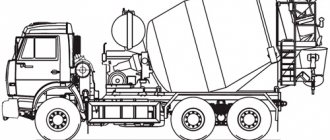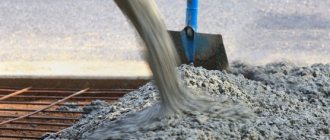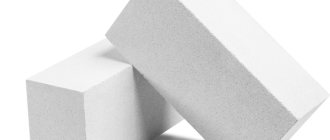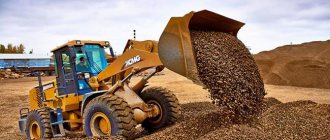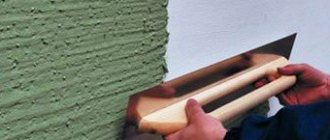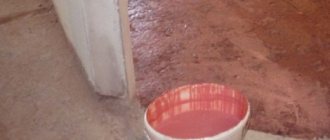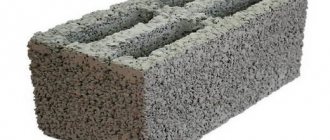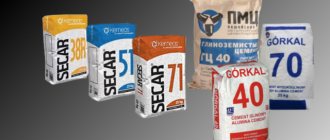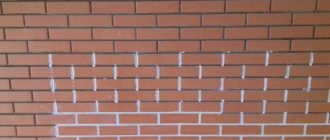The main advantages of Sand Concrete M-300 Quick Beton on coarse sand up to 6.0 mm:
— sand concrete M-300 Quick Beton on coarse fractionated sand 6.0 mm, unlike heavy concrete with sand-gravel and sand-crushed stone filler, is self-compacting and does not require manual or vibratory ramming, including when forming reinforced slabs;
— a mixture of sand concrete M-300 Quick Beton, thanks to a cement gel saturated with fine particles of microsilica, when pouring formwork, evenly fills the form without the formation of voids, penetrating into the smallest cracks of the reinforcing mesh;
— the concrete mixture of sand concrete M-300 Quick Beton, thanks to superplasticizers, microsilica and air-entraining additives, retains mobility at a low water-cement ratio, which guarantees maximum strength and the virtual absence of shrinkage processes with their negative consequences (micro- and macrocracks, deformation stresses, etc. );
— water-repellent additives in M-300 Quick Beton sand concrete determine the activity of cement regardless of the timing and storage conditions of the dry mixture and the absence of aggregated particles and flocculi of cement stone before the concrete mixture begins to set and harden;
— the homogeneity of the structure of the dry and water-mixed sand concrete mixture M-300 Quick Beton determines the anisotropy of the strength and thermophysical properties of structures and products by volume;
— anti-frost and water-repellent additives in M-300 Quick Beton sand concrete allow not only to carry out work at temperatures down to -15 degrees Celsius without any significant disruption to the workability of the mixture, but also ensure high frost resistance of structures/products due to the minimum content of physically bound moisture in the structure and extremely low sorption moisture content of the resulting concrete;
— blockage of capillaries and small pores in sand concrete M-300 Quick Beton with microsilica, as well as hydrophobic cement stone, nullify the processes of carbonization shrinkage during the operation of structures/products;
— preventive cleaning of fractionated sand from harmful and unwanted impurities, including dolomite, with optimization of the alkalinity of the composition eliminates the risks of efflorescence, rusty streaks, as well as negative dedolomitization processes (CaMgCO3 (dolomite) + alkaline caustic solution ® MgOH2 (brucite) + CaCO3 ( calcium carbonate) + K2CO3 (potassium carbonate) + alkaline hydroxide) with an increase in micro-macro volumes, the appearance of cracks, breaks and large deformation stresses observed in heavy concrete during operation.
Delivery of solution m300 Pk1-4 to Noginsk
Water holding capacity is an important characteristic for installation work. Severe loss of water from the solution leads to the formation of cracks and loss of strength.
Setting time. From mixing to the start of the cement hydration process - 2 hours, but the value can vary within very wide limits under the influence of gypsum additives, low or high temperature, and constant stirring. The ratio of components in the concrete mixture is selected in such a way that small filler particles evenly fill the space between large ones, therefore the density and consumption of the material are slightly higher than for conventional CFRP.
Don't forget that:
M-300 Quick Beton sand concrete mixtures do not delaminate and maintain a homogeneous structure even with significant volumes of formwork pouring, and concrete mixtures can be prepared manually or using wind-shaped attachments on an electric drill without the use of concrete mixers.
Economic feasibility of using sand concrete M-300 Quick Beton on coarse fractionated sand 6.0 mm for pouring foundation beds, columnar and strip foundations, plinths, monolithic belts and floor slabs:
— the non-shrinkability of the M-300 Quick Beton sand concrete mixture with good fluidity allows for molding in formwork in one pour without additional measures for leveling structures/products, as well as repairing surfaces due to the virtual absence of cracks;
— due to the self-compacting nature of the M-300 Quick Beton sand concrete mixture, in the vast majority of cases there is no need for manual or electromechanical vibratory ramming, which reduces labor losses and financial costs during construction;
— the mobility of the concrete mixture with fractions of no more than 6 mm makes it possible to fill, without voids and discontinuities, often reinforced structures that have the required strength in smaller volumes, which makes foundations lighter and reduces the material consumption of foundation work;
— thanks to the processes of carbonization shrinkage and dedolomitization reduced to zero, as well as the frost resistance of concrete, there is no need for regular costs for the renovation of foundations and plinths;
— one purchase of M-300 Quick Beton sand concrete allows you to carry out foundation work, form monolithic strip ties under the floors and the floor slabs themselves directly on site, which reduces time losses and minimizes delivery costs.
Price and selection options
When choosing M300 sand concrete (see technical specifications, price), you should contact trusted manufacturers. There are many brands on the domestic market that have decent quality. For example, “Stone Flower” sand concrete, whose technical characteristics are not inferior to foreign analogues, can become a worthy choice. Sand concrete M300 “Rusean” has earned good reviews.
The average cost of one bag of the finished mixture is 170 rubles. This amount will have to be paid for 50.0 kg of sand concrete.
In conclusion, I would like to note that the introduction of high-grade material is not always advisable . If you plan to carry out internal plastering work, install a rough screed, seal cracks and seams, you can use M150 sand concrete, the technical characteristics of which fully satisfy the needs of such repair and construction work.
The practical use of sand concrete M-300 when pouring screed is shown in the video:
Composition of sand concrete M-300 Quick Beton.
The composition of sand concrete M-300 Quick Beton on coarse fractionated sand 6.0 mm for pouring foundation beds, columnar and strip foundations, plinths, monolithic belts and floor slabs was developed taking into account the specifics of foundation work and molding structures/products in removable and permanent formwork. The percentages of coarse sand and fine fractions were optimized for a minimum water-cement ratio, and the plasticity and workability of the mixture was formed by hard doses of microsilica, superplasticizer, and air-entraining additives. All components of the formulation were added to the dry mixture exclusively by weight and not by volume, which made it possible to stabilize the percentage composition regardless of the moisture content of the filler. The use of water-repellent rather than hydrophobic additives determined the stable granularity of the dry concrete mixture during long periods of storage/transportation.
Preparatory work when using sand concrete M-300 Quick Beton for pouring foundation beds, columnar and strip foundations, plinths, monolithic belts and floor slabs.
An unprecedented positive fact of using M-300 Quick Beto sand concrete when pouring formwork for foundation structures, monolithic frames and floor slabs is the simplification of traditional technology for working with heavy concrete - the high adhesive strength of M-300 Quick Beto sand concrete guarantees reliable and durable adhesion to almost all materials compatible with cement binding materials, the self-compacting properties of sand concrete make it possible to avoid forced compaction work, and the non-shrinkability of the mixture allows the formwork to be poured in one finishing stage.
Preparation of concrete mixture of sand concrete M-300 Quick Beton on coarse fractionated sand up to 6.0 mm.
Taking into account the predominant blocking of cement clinker, but not filler, by water-repellent additives from moisture penetration during storage/transportation of sand concrete, the instructions for sand concrete M300 QB give an acceptable range of specific volumes of mixing water during the preparation of the mixture. The lower limit of mixing water with a guaranteed confidence probability refers to the moistened filler and should be considered as the starting limit during mixing of the dry mixture. Depending on the actual moisture content of the filler, mixing water can be added to the solution during mixing in small portions, achieving the most convenient consistency of the concrete mixture for performing a specific task.
Method of using sand concrete M-300 Quick Beton on coarse fractionated sand up to 6.0 mm.
The pouring of foundation beds, strip and column foundations and plinths is carried out in strict accordance with foundation work technologies, with the exception of the requirements for forced compaction of concrete in formwork. The formation of monolithic belts for floors, as well as reinforced slabs and lintels, must be carried out in accordance with the regulations for working with concrete on cement-gravel and cement-crushed stone filler, excluding the use of portable vibration compaction heads and/or manual tampers. Work at negative temperatures down to -15 degrees Celsius should be carried out with sand concrete with the lowest possible water-cement ratio, up to a slight decrease in the workability of the concrete mixture.
CONSUMPTION RATES OF SAND CONCRETE M-300 Quick Beton
The consumption of sand concrete M300 for a work area of one square meter (1m2) with a layer thickness of one centimeter (10mm) is equal to 17 kilograms of dry mixture, corresponding to a layer thickness of 10 centimeters (100mm) equal to 170 kg of the mixture.
The consumption of M300 sand concrete for the volume of work performed is one cubic meter (1m3) equal to 1750 kilograms of dry mixture. Each bag of M-300 QUICK BETON sand concrete contains 50 kg of a special dry mixture.
Preparation and use of a solution from a dry mixture of sand concrete M300 in big bags (MBR).
When preparing:
— in small batches of mortar, the dry concrete mixture of sand concrete M300 is evenly introduced into a container with a measured volume of water for mixing, continuously mixing the mortar mixture with a construction mixer or a powerful drill with a special spiral attachment and achieving a homogeneous composition without lumps and inclusions. After 10-15 minutes of maturation of the prepared solution, the mixture is mixed again and used for no more than 120 minutes, depending on the temperature and humidity of the surrounding air;
— for large batches of mortar, a dry concrete mixture of sand concrete M300 and a measured volume of water for mixing are loaded into the hopper of a concrete mixer or concrete pump according to the instructions of the mixing equipment manufacturer.
To mix concrete solutions of M300 sand concrete, it is advisable to use targeted forced-action concrete mixers/concrete pumps with a shaft rotation speed of 65 rpm, aimed at preparing solutions from dry building mixtures. The mixing time of the concrete mixture of sand concrete M300 in a forced-action concrete mixer/concrete pump must be at least 50 seconds, in gravity stationary mixers - at least 90 seconds.
The production of structures/products from M300 sand concrete with the declared technical characteristics, as well as mortars with the declared manufacturability, is guaranteed only if work is carried out using standard technologies for arranging screeds, driving foundations, casting products, etc. and skilled workers.
SPECIFICATIONS
| Adhesion to the base, MPa, not less | 0,6 |
| Compressive strength, MPa, after 28 days not less | 30 |
| Viability of solution, h | 2 |
| Recommended layer thickness, mm | 50-200 |
| Consumption of dry mixture per layer thickness of 10 mm per 1 sq.m, kg | 16-18 |
| Frost resistance, cycles, not less | 100 |
| Preparation of adhesive mixture kg water/kg mixture | 0,15-0,18 |
description and composition, characteristics and proportions of production using M500 cement
Owners of land plots prefer to use concrete prepared by themselves when constructing independently. In most cases, this is due to the required volume of the finished mixture, when the quantity provided by the seller exceeds the required one. The most widely used solution is considered to be a solution made according to the proportion of M300 concrete from M500 cement.
Description and composition
Those who encounter concrete for the first time should know that it is the same stone, only created artificially. The constituent components are:
- Cement.
- Sand.
- Water.
- Crushed stone.
The reliability of the prepared mixture and the place of its application depend on the brand, quality and fraction size of these components.
In industry, grade 500 cement, sand, water and fillers are used to make the mixture. Different plasticizers are used together with these components depending on operating conditions. The main filler in this mixture is crushed stone (gravel or granite). Crushed granite, having a high degree of strength, significantly improves the quality of the solution, but also affects the cost of the finished product. The use of components such as sand and crushed stone allows the created structural skeleton to take on the entire main load.
In proportions of grade 300 concrete, limestone and gravel are also used as filler. A mixture of cement and water gives the solution a homogeneous mass. According to GOST, the strength of crushed stone must be 2 times greater than the grade of mortar in which it is used. Thanks to this, it becomes possible to avoid significant deformations of the structure while the substance is gaining strength.
Generally accepted proportions
| Concrete grade | Cement brand | Composition volume (10 l) cement, sand, crushed stone | Weight of composition (10 l) sand, crushed stone | Volume of concrete (from 10 liters of cement) |
| M300 | M500 | 1:2, 4:4,3 | 22:37 | 47—48 |
When producing M300 grade concrete, proportions and components must be observed in accordance with the technical specifications, use a concrete mixer and use vibration to prevent the formation of air bubbles.
Specifications
It is this kind of building mixture that is used for pouring the foundations of private buildings, making stairs, beams, piles, that is, it is used in places where heavy loads are expected.
- Class - B22.5 (compressive strength, corresponds to 250 MPa).
- Frost resistance - F 200 (withstands freezing and thawing cycles, that is, 200 cycles).
- Mobility of the mixture - P 2 - P 4 (thickness of the solution; the less water, the solution is thicker than P 2, more liquid, respectively, P 3, P 4.) The mobility of the finished composition depends on the requirements for the object.
- Water resistance - W 6 (mixture with reduced moisture permeability).
- Strength - 295 kg/cm3.
- Hardness - Zh2-Zh4.
M300 at home
You can make 300 grade concrete by hand and using a concrete mixer. Manual preparation is more labor-intensive and is used when making a small amount of the mixture, which must be used in a short time, otherwise the mixture will lose its quality.
Using a concrete mixer will greatly simplify the process of preparing the solution; the mixture can be used over a longer period of time. The technology for self-production is quite simple. The main thing is to comply with all the proportions indicated in the table above. For example, to prepare one cubic meter of mixture, you need to prepare 350 kg of grade 500 cement, 850 kg of sifted sand, 900 kg of crushed stone, 200 liters of water.
Crushed stone and sand should not contain clay or other unnecessary components to prevent the formation of air bubbles. Regardless of which method you use (manual or automatic), in order to obtain a high-quality solution, you must maintain the proportions and mixing order. It should be remembered that the amount of water used in the preparation of the mixture is exactly half as much as the amount of cement.
0.5 of the calculated volume of water is poured into the bowl of the concrete mixing machine (working). Then cement and sand are added in small portions. The mixture should mix well and have a homogeneous mass. Crushed stone is then added and mixing continues. Water is added in two or three ways, depending on the consistency of the mixture. The solution is mixed until it becomes homogeneous and plastic.
While observing all the technologies for producing concrete 300 in proportions, do not forget about the conditions for its hardening. During the hardening of concrete in the solution, the process of binding particles of the soluble substance with water occurs.
In the early stages, you should constantly water the concrete to avoid cracks and lack of strength. The surface must be constantly damp during the curing process.
twoidvor.com
Types of sand concrete in the QUICK BETON line based on fractional sand (click to enlarge):
Sand concrete M300 Cast concrete for light screeding of floors with a thickness of the first layer of up to 50 mm and preparation of installation mortars of increased strength.
Sand concrete M300 MEDIUM for performing floor screed with a thickness of one layer up to 100 mm and installing heated underfloor heating.
Sand concrete M300 LARGE is the most durable for pouring foundations, plinths, floor slabs, reinforced floor screed with a thickness of one layer up to 200 mm.
